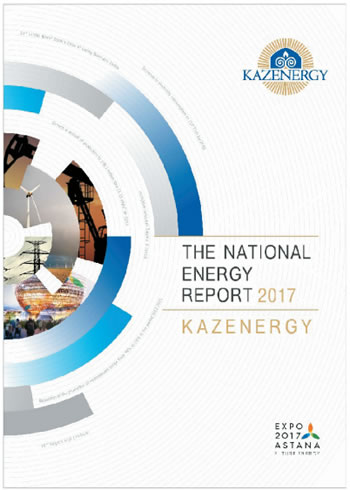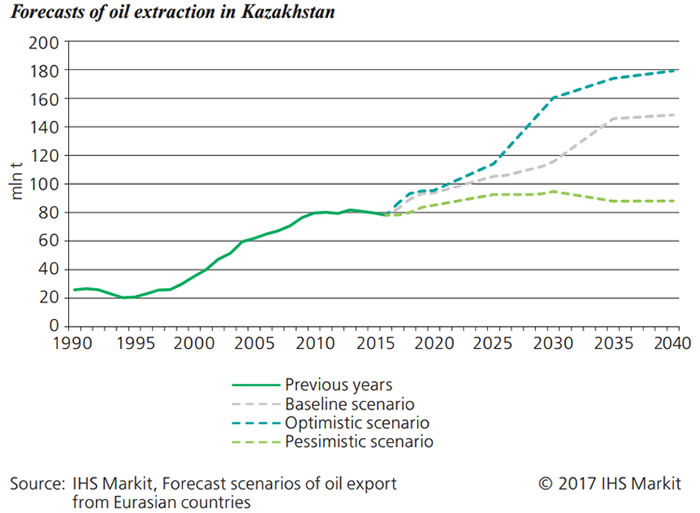Exclusive
2017 National Energy Report Is Published
Ramazan Zhampiissov, Oleg Arkhipkin, Ruslan Mukhamedov
The development trends in the world energy show us that we live in an era of significant changes happening in the global energy. The volatility of energy markets, use of innovative technologies and development of new energy sources, problems of climate change, and many other conditions, events and driving forces have a radical impact on the changing nature of energy production and consumption on a global scale. In this situation, it is especially important for Kazakhstan to have a holistic view regarding the future development of the national economy's strategic sectors, where the fuel and energy complex occupies a special place.
In this connection, since 2013, KAZENERGY Association, as the largest Association of petroleum and energy organizations in the Republic of Kazakhstan, has conducted an active analytical work for the regular issue of the National Energy Report. The main purpose of this work is to provide a comprehensive overview of the current state and future prospects of the energy development in the Republic of Kazakhstan.
The fuel and energy sector of Kazakhstan is the driver of the economic development, the share of which is over 60% in the total industrial production. Kazakhstan is one of the key manufacturers and suppliers of energy resources in the region. It is the world's leader in uranium mining, and it annually ranks among the Top-10 coal producers and Top-20 oil extractors. Over the past two decades, the country's oil production has quadrupled, and the uranium mining has increased by more than 30 times. Over the next two decades, Kazakhstan is expected to preserve its position as an energy supplier, but also to show a significant growth in oil production.
At the same time, the long-term development of the fuel and energy complex faces internal problems related to infrastructure modernization (especially in electricity), and changes in global markets, which require long-term planning and ensuring the conditions for attraction of new investments.
The National Energy Report, prepared by KAZENERGY Association in 2017 within the framework of the International Specialized Exhibition EXPO-2017 "Future Energy" keeps on covering the development issues and problems in the fuel and energy sector that were first noted in the previous versions of the Report. The Report focuses on three main aspects: scenarios of energy sector development, taking into account market forecasts, analysis of technological innovations that can have a significant impact on energy markets and recommendations for legislation development, including the regulations that improve the stability for investors.
In light of limited funds available for investment globally, investments should be thoroughly checked and channeled primarily to countries with more attractive fiscal and regulatory environments. The current drafts of the Tax Code and the Subsoil and Subsoil Use Code contain some of the Report's proposals, which stimulate investments in exploration and extraction.
It should be noted that the oil price forecast presented in the National Energy Report 2015 was the closest to the current level of oil prices. At the same time, the development forecasts made in the Report based on energy market scenarios and existing development trends in energy sectors are quite different from those adopted and approved in Kazakhstan. Thus, the scenario of IHS Markit (an international research agency, which is a key consultant on the Report drafting) suggests that the increase in oil production will be more than 60% by 2040 with growth rates in electricity and motor fuel consumption lower than the rates specified in the adopted state policy documents. It should be stressed that forecasts and scenarios are extremely important for the country, above all, in order to avoid inefficient investments in excessive production, and to modernize and develop infrastructure taking into account the projected energy production growth.
The Report forecasts further growth in the oil production (up to 143 million tons by 2040), among others, through the potential development of offshore fields. Most likely, a new development impetus will be experienced by the gas industry of the country due to the projects of methane extraction from coal deposits and development of infrastructure for liquefied natural gas.




